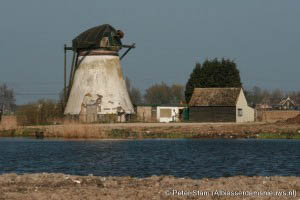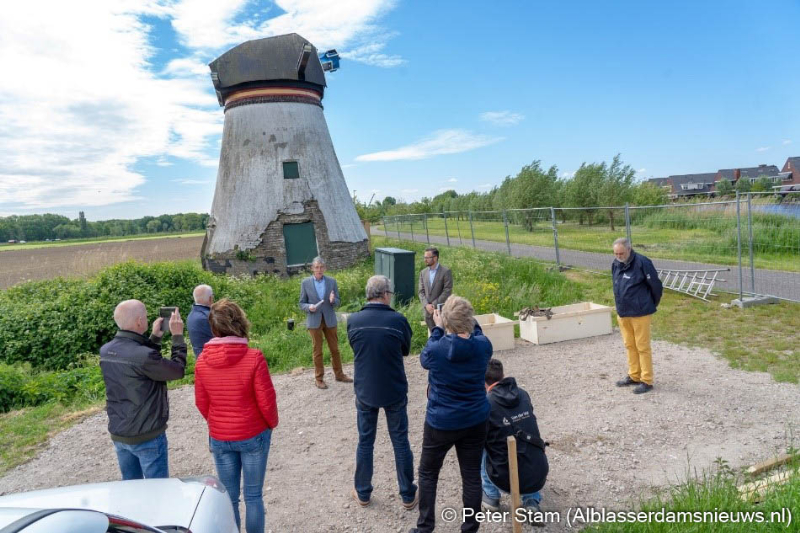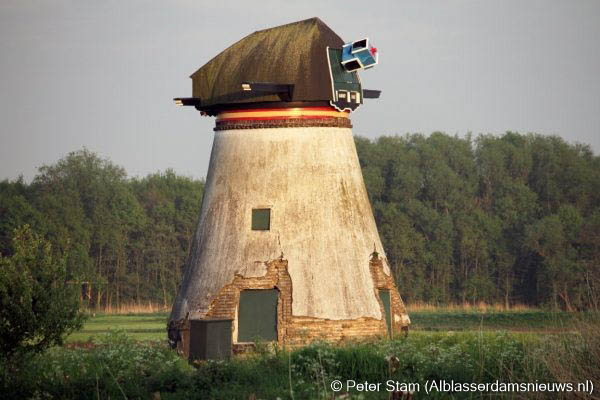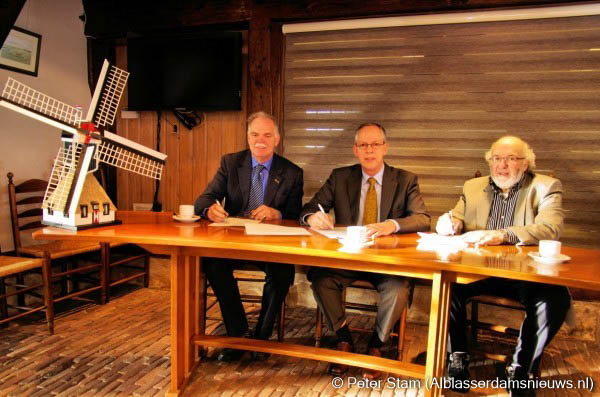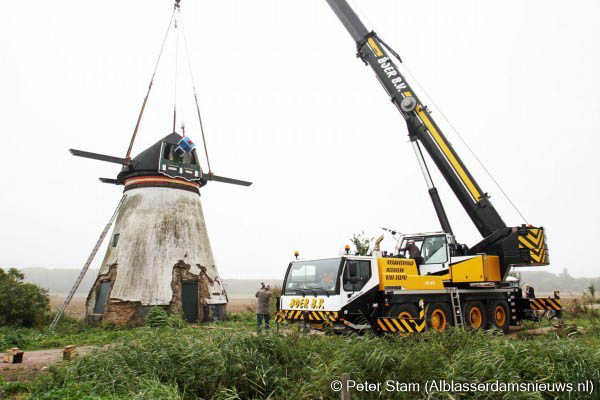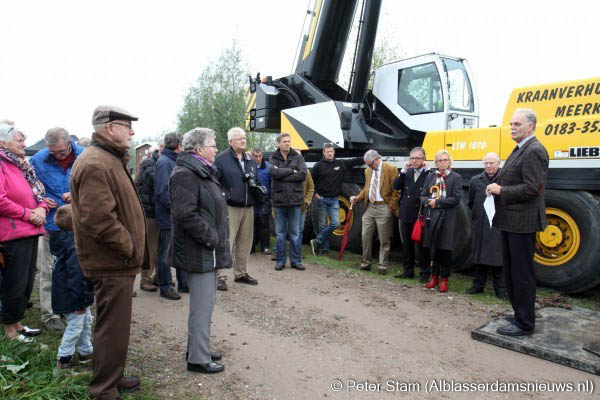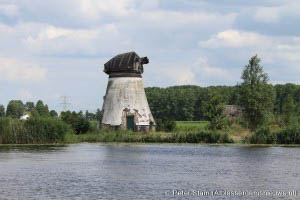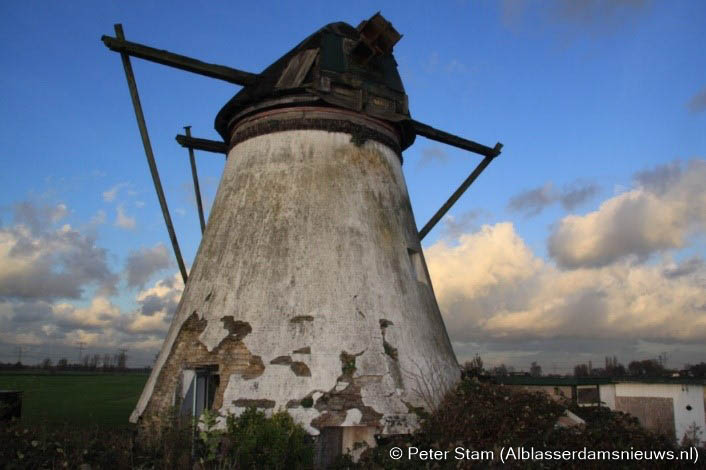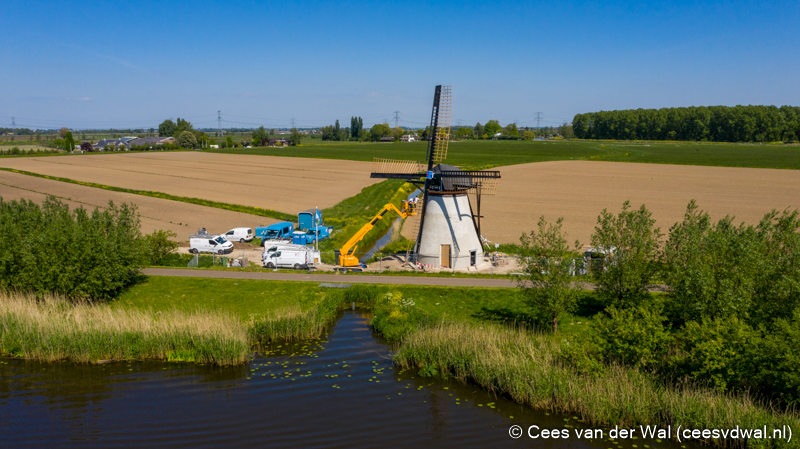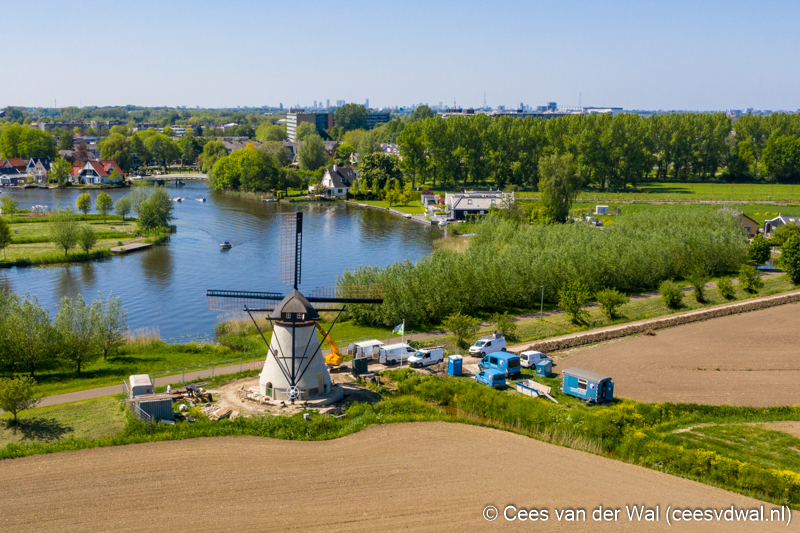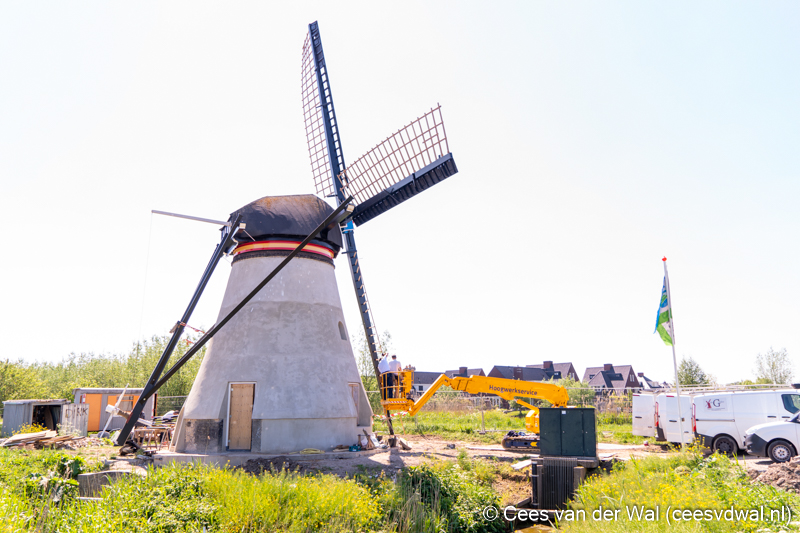Stichting Schutsluis Alblasserdam
The polder Souburgh in Alblasserdam was pumped in the past by a windmill. The windmill was built in 1860 and demolished in 1997 (Molendatabase, 2018). The mill of Souburgh is classified as a national monument. The function of pumping was already taken over by an electric pumping station. In 2012 a design spatial plan for the polder Souburgh was prepared by the board for the council.
Since 2008 the reconstruction of the mill is under review by Province South Holland and Municipality Alblasserdam as part of a larger spatial development plan De Waardhoven-Oost consisting of housing, revitalizing the farm and other assets in the polder Souburgh. The picture quality plan has been made. A picture quality plan (beeldkwaliteitsplan) is an important tool for quality assurance of spatial plans. The plan is a policy piece with which the municipality makes arrangements with developing parties. In the mean-time the houses in accordance the spatial plan are built and the farm in polder Souburgh has been renovated.
The renovation of the mill is in progress and will be finished autum 2020. The owner of the polder Souburgh has withdrawn his offer to renovate the mill because the number of villa’s in his permit has been limited by the Province South-Holland. The mill has been bought by the municipality for the symbolic amount of € 1.- in 2013. The mill has been sold for € 1 in 2014 to SIMAV (Stichting Instandhouding Molens in Alblasserwaard-Vijfheerenland) a foundation for the preservation of mills. There was a technical discussion between the government agencies about the preservation of the mill. The discussion was about a pumping mill or a mill that only turns the wings. A pumping mill requires a water loop. This means digging a canal between the polder and the peat river Alblas. Digging also means archeological research and additional cost. The decision-making process between the main stakeholders took a lot of time. A subsidy of the Province South-Holland was withdrawn due to a time constraint of validity.
In the council meeting of 14 November 2017 a decision has been taken about the subsidy of the preservation of the mill with turning wings. The project of the reconstruction of the windmill started as a citizens’inititiave. The initiative of the preservation of the mill was part of the request for a permit to renovate the farm and to build six land villas. The board and the council of the Province South-Holland refused the permission to build 6 land villas. The owner of polder Souburgh withdrew his attention for the mill on financial grounds.
The municipality Alblasserdam bought the remainings of the mill for a symbolic amount of € 1.- and passed it to SIMAV. The process between the main stakeholders Province South-Holland, municipality Alblasserdam and the foundation for maintaining mills passed several phases about the funding of the reconstruction and the function of the mill. One of the stakeholders, Lions Club Alblasserwaard incorporated a foundation for the preservation of mill Souburgh. The system world of the public administration and the living world of which SIMAV belongs have different networks and decision-making processes that have to match. Lessons can be learned from the theory of Ostrom and Ansell and Gash, setting the boundary of the action arenas and the collaborative governance and Lowndes et al for the motivation of the participants.

Figure 1a Circular brick, ground sailor

Figure 1b Remainings of mill Souburgh
Kortland 57, 2954 LC Alblasserdam Circular, round stone ground sailer Year of construction 1860. The mill has a discharge head of 70 cm
International Conference on Innovative Built Heritage Models and Preventive Systems (Changes) 6-8 February 2017, Leuven, Belgium
The decision-making process from a citizens’initiative to a plan of reconstruction (Obstacles and Changes)
A. den Boer
Rotterdam School of Management, Erasmus University, Department Business-Society Management
